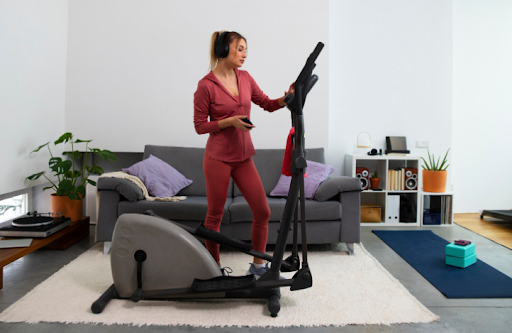Gym memberships are great until you realize you’re paying monthly just to fight someone for the one squat rack in the entire place. The good news is, you don’t have to go to the gym or pay someone else to stay fit and active. In fact, you can build your own gym at home.
A home setup gives you freedom, privacy, and zero waiting lines. But where do you even start? Among the endless equipment options and essentials, what gear will actually help you?
Here’s what you really need to build a home gym.
1. A Squat Rack
A good squat rack is not just for squats, but it’s the backbone of most strength training setups. You can bench, press, deadlift, and even do pull-ups if your rack includes a bar. It gives you flexibility to safely lift heavy, even if you’re training solo.
When shopping for one, look for sturdy steel construction and adjustable safety bars. Some racks also come with attachments and add-ons. If you can only invest in one big piece, make it this one. It’s versatile, safe, and grows with your training.
2. A Barbell and Weight Plates
A squat rack without a barbell seems pointless. Go for a standard Olympic barbell since it fits most racks and plates. If you’re tight on space or budget, there are also compact barbells that still hold a good amount of weight.
For plates, consider getting a mix of bumpers and iron ones, depending on what you’re training for. Bumper plates are great for deadlifts and Olympic lifts since they’re safer on your floor, while iron plates save space and money.
3. Adjustable Bench
You don’t realize how often you’ll use a bench until you have one. From bench presses to step-ups and seated curls, it’s a must. Just make sure to choose one that adjusts from flat to incline so you can hit a variety of movements.
Benches also make a great spot for bodyweight workouts or elevated core exercises.
4. Dumbbells
You don’t need a full rack of dumbbells unless you’re planning to open a commercial gym or share the space with friends. Adjustable dumbbells save space and cash while covering a wide range of weights.
If you prefer traditional sets, start small. Get pairs of 10s, 20s, 30s, and 40s as they will handle most basic routines. Over time, you can expand based on your training goals.
5. Resistance Bands and Accessories
These little things don’t get enough credit. Resistance bands are perfect for warm-ups, mobility, or adding extra challenge to bodyweight moves. They’re also easy to store and use literally anywhere.
Other underrated accessories include a jump rope, which is great for cardio when you don’t want to run outside, a lifting belt, and scraps that will help your form and grip once you start moving heavier weights.
Rubber mats and foam tiles are also essential for floor protection. Dropping weights on tile or wood is a bad idea unless you enjoy home repairs.
